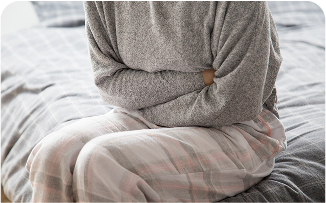Urinary Incontinence
Personalized care to reduce bladder leakage and restore your confidence

What Is Urinary Incontinence?
Urinary incontinence is a common and often distressing condition marked by the involuntary loss of urine. This loss of bladder control can interfere with your daily activities and have a significant impact on your overall well-being.
Several factors can contribute to urinary incontinence, including age-related changes, medical conditions, lifestyle habits, and gender-specific issues. While the condition is widespread, it should not be considered a normal part of aging.
What Is Urinary Incontinence?
Urinary incontinence is a common and often distressing condition marked by the involuntary loss of urine. This loss of bladder control can interfere with your daily activities and have a significant impact on your overall well-being.
Several factors can contribute to urinary incontinence, including age-related changes, medical conditions, lifestyle habits, and gender-specific issues. While the condition is widespread, it should not be considered a normal part of aging.

Why Treatment Matters
Prompt treatment is key to improving bladder control and avoiding complications. Many people delay seeking help due to embarrassment – especially men- but untreated incontinence can lead to skin issues, infections, and even signal underlying conditions like nerve disorders.
Beyond physical discomfort, it can affect your mental health, social life, and overall quality of life. Addressing it early can help you regain confidence, comfort, and independence.
Treatment Options
We offer a range of effective treatments tailored to the type and severity of your urinary incontinence. After a thorough evaluation, we’ll recommend the best approach to help you regain control and improve your quality of life.
Urge Incontinence (OAB)
Learn how we help manage sudden urges and frequent urination through tailored strategies and long-lasting treatment options.
View More→
Overflow Incontinence
Discover how we address incomplete bladder emptying and reduce constant dribbling with effective and supportive care.
View More→
Why Patients Trust Northwest Continence Center
We take a science-based, compassionate approach that puts your comfort and results first.
Advanced Axonics Therapy
A minimally invasive solution that restores nerve communication for lasting relief.
Personalized, Science-Based Care
Every treatment plan is tailored to your unique needs using proven medical approaches.
Experienced, Specialized Providers
Our experts are trained in continence-focused procedures and neuromodulation techniques.
Judgment-Free Patient Support
We create a respectful, compassionate environment where you feel safe and heard.
We’re More Than Just a Clinic
We understand that incontinence can be emotional and isolating. That’s why we’re committed to making your experience safe, respectful, and empowering. Every visit is designed to make you feel heard and supported.
Let’s find the right solution together.



